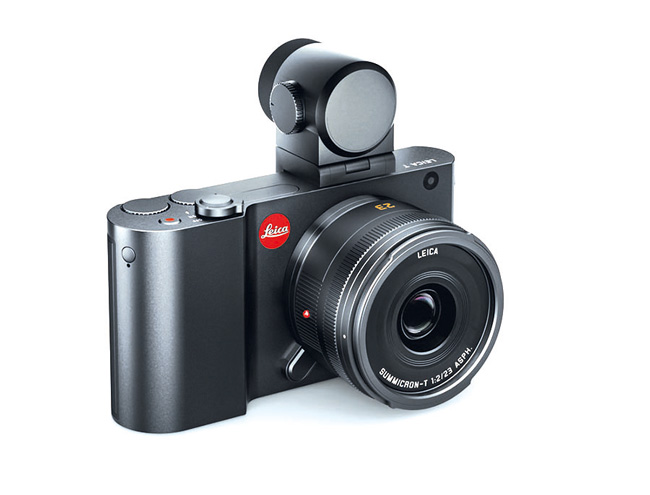The Leica T

Leica T

1/15th @ f7.1, ISO 400
You may have seen the tee shirt,‘Life is uncertain – start with dessert’. Well, that’s my maxim for this brief review for two reasons. Firstly, the hors d’oeuvres and entree’s have already been served by reviewers far more experienced than myself, particularly here on LuLa; but also by Slack, Thein and Huff… links below). There is no point in my repeating their first class writings. Secondly, those reviews are in broad agreement that the Leica T is fundamentally a Good Thing although they have some, relatively minor reservations.
But I’m starting with dessert. So I’ll zero in on the three key features which really stand out for me and tell you why. They are Image Quality, User Interface and Experience.
Firstly, a quick overview in the unlikely event that you missed the launch; the T is a new system from Leica with radical styling and operation, a mirrorless camera with a 16MP, CMOS, APS-C sensor, M lens adapter, Visoflex EVF, two lenses now and two more to follow by the year end.

0.4 sec @f4.5, ISO 800
Image QualityI know that photo forums are full of people who claim to be able to tell the difference between an image from a CMOS and a CCD sensor at a distance of 100 yards in thick fog, or who dribble at the prospect of analysing the edge sharpness of a Leica vs Zeiss lens at 100%.It’s very entertaining but truly I am not one of these sensitive souls. Particularly when most major camera manufacturers apply lens corrections in their software anyway and skilled post processing can render almost any look we want, given a reasonable quality image to start with.
So throughout this post I’m including numerous images, shot with a Leica T, imported into an iPad, processed and posted during a road trip in New England, USA.Yes, if it was a commercial shoot, I’d start with the RAW DNG’s on a desktop but as other reviewers have pointed out this is not a camera aimed primarily at the professional market, so it makes for a good test of everyday use of the Leica T.
I expected good IQ but found it to be superb. The 16MP, APS-C sensor seems to have struck a sweet spot for quality. It renders accurate color and good micro contrast and does not have the alleged issues of the 24MP APS-C cameras which seem particularly sensitive to shot discipline. I used it on AWB and got consistent results across a variety of subjects, including skin tones.

1/20th @ f7.1, ISO 400

1/25th @ f11, ISO 400

1/640th @ f3.5, ISO 6400
Being used to prime lenses on my M240, initially I was disappointed not to have the fast 23mm/f2 (35mm equivalent) to test. But the convenience of the 18-56mm/3.5-5.6 Vario Elmar Asph (27-84mm equivalent), light weight and superb quality soon compensated. The images have a polished, crisp look which required minimal sharpening.
I compared unretouched shots taken with the 50mm Summilux with the M adapter and the 18 – 56mm zoom. Obviously the Summilux is a more flexible lens but the zoom performs really well. I’m sure if I pixel peeped long enough there is a difference but it certainly isn’t obvious.
Most reviewers have settled on suggesting 3200 ISO as the comfortable limit. I’d agree with that but it is subject matter dependent. Check this image shot at 6400 ISO. Generally the files are robust with a good dynamic range.

1/250th @ f5.6, ISO 1600
User Interface
The Leica T has a 3.7inch, 1.3 million pixel, glass LCD spanning the entire back of the camera. It’s easy to say,’Oooh it’s just like Apple designed a camera’. Hang on a moment! Apple has a market capitalisation of $582bn and employs 50,000 people in the US alone. Leica is valued at $633m and employs 1400 people worldwide. The feat of innovation here is breathtaking. Using Audi design, Leica have revolutionised the basic operation of a camera to move it from just beyond the film era into the modern age. Credit here to Samsung for having started with P&S cameras but Leica have adapted the principle and taken it into a different league.
At first I tapped, pinched and swiped just for fun. Then I dragged and dropped. Finally the novelty wore off and I was left with a brilliantly simple, get-out-of-the-way means of making images. We’ve learnt from Apple that the UI can be seductive and practical and the Leica T demonstrates this applied to a camera. When you’re done customising, you have two thumb wheels controlling your most important settings and a top level menu with a short list of key options. That’s it. Now, go and shoot.

1/250th @ f5.6, ISO 1600
I won’t bore with you with the stats. You know that the big DSLR manufacturers are many times the size of Leica. Surely if a new UI was a good idea, those companies would have done something by now? Theoretically yes. But they seem obsessed with a mechanical holy grail. Its all about numbers. The quest to beat 60 fps, 61 point AF and 102,400 ISO. Meantime they’re missing the emotional point that for many people the interface is collapsing under the complexity of all those bells and whistles. Some of the latest DSLR’s have over 22 buttons. Seriously? Where do they go next…. 32 buttons? The UI for this generation of DSLR’s has departed from the beautiful simplicity of film cameras but has yet to arrive in the modern age. The words ‘cul de sac’ come to mind. Meantime considering the Leica T is the first iteration of a revolutionary operating system, it is smooth and simple and can only improve in time.

1/320th @ f8, ISO 400
Experience
‘It’s not exactly light is it?’ said my wife when I brought the camera home. She’s right. At 640 gms inc. zoom lens it is unexpectedly solid. But it looks beautiful and feels right. Milled and polished from a solid block of unobtainium (actually satin finished aluminium) it preserves the M tradition of a camera which fits into the hand perfectly. A good example of German engineering and craftsmanship. The clean sculpted lines without seams and minimalist controls signify that this is going to be a different experience.The operating details have already been well covered in other reviews so here I’ll just highlight a couple of features I liked and some I didn’t. It’s a camera that makes you want to use it. The ergonomics just work, the menu system is so simple and intuitive you barely need the manual. The LCD is clear and easy to read even in bright sunlight. Working with the Visoflex allows the camera to be set so that you can check exposure before shooting by just a half press on the shutter. Touch AF works well with the camera on a tripod when shooting landscapes. Turning the focus ring with an M lens attached brings up the option of x3/x6 magnification. Its deceptive. Under the almost playful smartphone styling the T offers plenty of sophisticated options.

1/3200th @ f8, ISO 400
However I found the camera slow to use with the Visoflex. Raising the camera to your eye activates the EVF…… pause….….. in 1.4 secs (according to Leica). That doesn’t sound too long but in street shooting this can mean the difference between making and missing the shot. Spontaneous it is not. My other gripe is the strap. Looks great, feels grippy but try wearing it on a hot day over a tee shirt. The lack of any thicker padded section on the strap makes it sweaty and uncomfortable.
I will happily sacrifice extra features to work with a camera I love using. But I recognise that many people have different needs, so in the interests of fair play I’ll point out what the T does not have: image stabilisation, an articulated LCD, focus peaking and sensor cleaning. If you like to buy the camera with the most features or if they are critical to your way of shooting, then you’ll need to look elsewhere.However the T is a beautiful industrial art object, a delight to use, it produces top notch images and is a refreshing design innovation in a sea of me too products.

1/200th @ f7.1, ISO 400
Conclusion
Writing this review two months after the launch has been interesting. It gave me the chance to look at other reviews where I’ve been astonished by reader comments. The amount of pent up angst and vitriol out there is hard to believe. Then I realised that to some people the Leica T embodies three great ‘evils’. Firstly, it is premium priced and luxury goods are clearly the work of the devil. Secondly, it is frequently likened to Apple. Just the mention of the word brings every PC power user and Android road warrior out in a rash. Thirdly it isn’t covered in little round things. You can’t be serious! Everyone knows proper cameras have at least twenty buttons. Wrong.
Many have said the T is for the smartphone generation, some added that it won’t appeal to traditionalists. I know plenty of people in both categories. Most of them have iPhones. Today, menu driven devices are a fact of everyday life. They co-exist with button driven. Why shouldn’t the same trend apply to cameras? In any case I believe the appeal will be psychographic rather than demographic.

1/125th @f3.5, ISO 12500

1/2500th @ f8, ISO 800
In business terms, Leica is a low volume, high performance, premium priced brand. Strategically the T makes sense by plugging a price gap in the product portfolio, in an innovative way. For me that’s not the full story. Leica products also ‘feel’ right. And that feeling is important. You can’t quantify it. It doesn’t show up on check lists but it is a core part of every great brand and it is present in the T.
Leica deserve to be congratulated for bold thinking and implementation. Whether the future includes fast primes, full frame or monochrom versions, or whether the UI migrates to other models, who knows? Pause and look at the bigger picture. The introduction of the T system is a decisive moment in the development of the camera industry.

1/125th @ f7.1, ISO 1600

1/320th @ f8, ISO 400
My thanks to Clara Kroher, Leica Mayfair, UK for the loan of the Leica T.
To read excellent, detailed and interesting Leica T reviews, click on these links. LuLa, Jono Slack, Steve Huff, Ming Thein

Olaf Willoughby is a photographer, writer and researcher living in London, UK. In October he is co-teaching, together with Eileen McCarney Muldoon a one week creative photography workshop called ‘Visual Conversations’, at Maine Media College, Rockport. He is a co-founder of the rapidly growing Facebook and website group, The Leica Meet. He has worked with the WWF and is author of, ‘Antarctica, A Sense of Place’. He can be contactedBy EmailorHis Website
©2014 Olaf Willoughby
Published September 14, 2014
